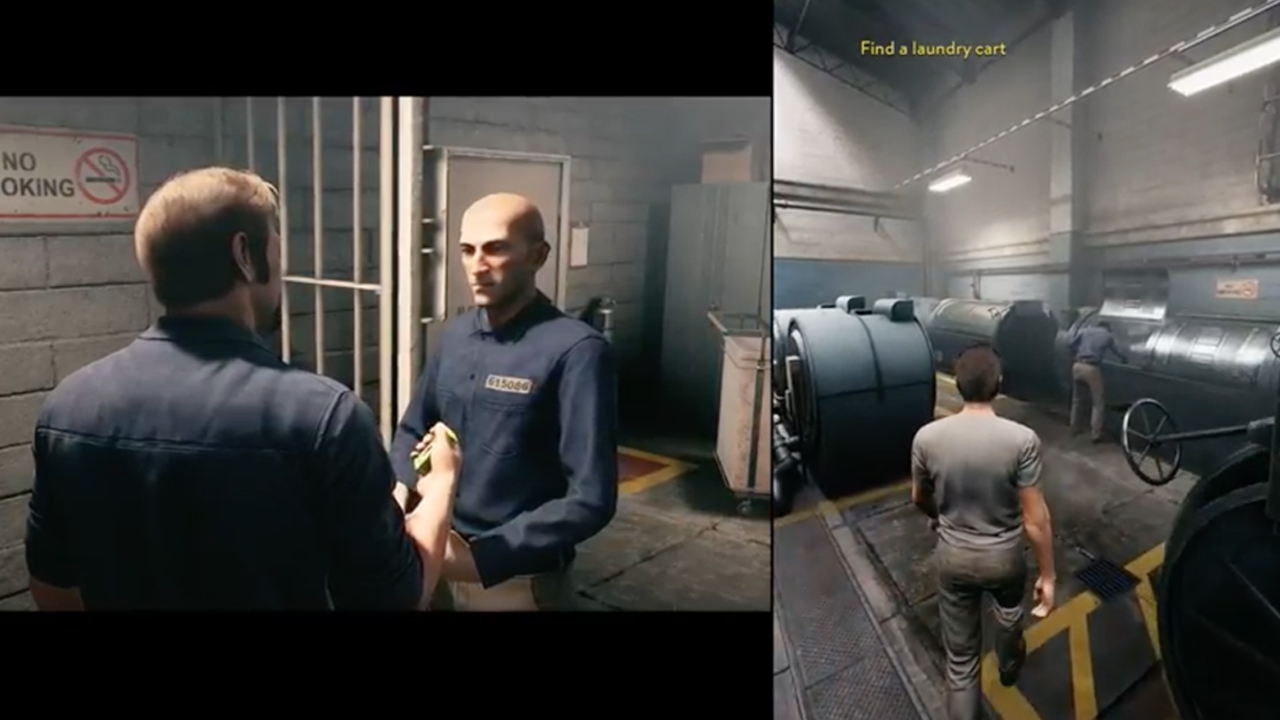A Way Out - the new prison break game - is revolutionizing co-op play. But are we truly ready for it?

Amongst a relatively light slate of announcements during EA Play (the company’s E3 press conference equivalent) was one big, notable surprise. Coming from the creator of Brothers: A Tale of Two Sons, A Way Out is the story of a pair of convicts working together to break out of the clink, with one bold new wrinkle: the game must be played fully in co-op, with an emphasis on local couch play (though online co-op will also be possible).
In some ways it’s the opposite of Brothers, which tasks you with controlling two characters with a single controller. It was a bold move at the time, just as such compulsory co-op is with A Way Out. However, even for new studio Hazelight it’s a pretty daring move, an attempt to force players to work together and engage with one another in a very mandatory way. While a number of experiences have tried different strategies to foster cooperation, it’s almost unprecedented that a game would be completely unplayable without a partner.
The game plays with this idea in some novel ways, too. For one, the two main characters Vincent and Leo (who look like your typical likeable toughs) start as foils, very antagonistic to one another, but are forced by circumstance to work together in a scenario anyone playing with randoms on the internet can immediately sympathize with.
It lays the groundwork for a character progression arc that encompasses not only the two protagonists but their relationship, which at first blush reads like a “hated rivals to buddy movie co-stars” evolution. The plot unfolds across cinematics that evoke both Uncharted and Telltale’s signature character-driven storytelling.
Even more interesting though is the way that the game’s mandatory co-op influences the camera and direction. It appears that even during online play, the screen will be split to show both characters, so as you go about your business as one, your partner’s (often only distantly related) activity is also shown. This not only allows both players to pursue different objectives, it also sets up scenarios where one player might be fully controllable and observing the other, who’s in the middle of a cut-scene, as when Leo observes Vincent being ushered into prison.
Some of the best co-op moments in gaming unfold from situations like these, where one player’s actions in a separate area contribute to the other’s progress. While the prime examples of this that spring into mind are gunning down enemies from above while the other player tries to traverse a difficult section on foot, the possibilities in a more narrative driven game are vast and tantalizing.

It’s easy to imagine a scenario where one player creates a diversion to distract some guards, or even massages them through dialogue, while the other slips past to steal tools or supplies. Being constantly aware of what’s happening in the other player’s game, seeing them onscreen at all times (even when you’re playing online), is a great way to create tension and keep the story moving. It also means that areas where the players meet and work together directly feel a little more special.
Weekly digests, tales from the communities you love, and more
The gameplay trailer shows how different situations can be handled in multiple ways, depending in large part on who takes the lead and who acts in a supporting role. Leo may take a more direct, hands on approach, relying on violence and more direct solutions, while Vincent seems to rely a little more on finesse, bribing other prisoners or guards instead of beating them unconscious. It opens up valid approaches for different playstyles, and makes me curious as to whether it will be possible to swap characters with your partner.

The trailers available now also show flashes of more traditional action sequences, firefights and car chases and brawling, which provide some opportunities to play around with the coop framework in some familiar ways, flanking some enemies in a shootout or weaving around a military truck on dirt bikes. It will be interesting to see how Hazelight balances its storytelling with these intense action set-pieces, a magic act Naughty Dog has all but mastered with Uncharted.
It’s a radical idea, making your game unplayable solo in an era when so many developers are scrambling to ensure that their multiplayer games can be enjoyed alone (just look at the heavy emphasis on the single player component of EA’s own Star Wars Battlefront 2, a primarily online multiplayer shooter), and it’s refreshing to see a developer stake out a position and go all in on it. Of course, if the core game didn’t look so appealing it might seem like a much less reasonable idea, but luckily for A Way Out, it’s looking like a polished and interesting game on its own merit. We’ll find out for sure in early 2018.
Alan Bradley was once a Hardware Writer for GamesRadar and PC Gamer, specialising in PC hardware. But, Alan is now a freelance journalist. He has bylines at Rolling Stone, Gamasutra, Variety, and more.



